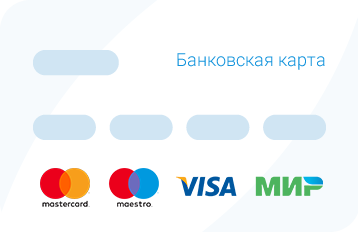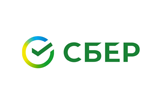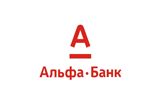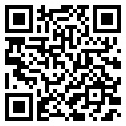
In the French language, there is a close but not always obvious connection between how a word is written (orthographe) and how it is pronounced (phonétique). At first glance, it seems that reading in French follows understandable rules, and many sounds can indeed be matched with specific letter combinations. However, in practice, this does not always work: the same letters can represent different sounds depending on their position in a word, stress, surrounding letters, or historically established exceptions.
Therefore, learning to read in French requires increased attention: it is important not just to learn the alphabet, but also to systematically study reading rules, become familiar with the most frequent exceptions, and compare spelling with pronunciation. Listening exercises, reading aloud, dictations, and reliance on phonetic transcription — especially in the early stages — can help with this.
A deep understanding of phonetics in combination with spelling will not only allow you to read words correctly but also confidently comprehend spoken French.
The sounds [y] and [u]
Everyone learning French knows how important it is to work on phonetics, correct pronunciation, and articulation because sometimes one mispronounced sound can completely change the meaning of a word, and sloppiness in pronunciation can even put you in an awkward situation.
For example, if you pronounce the sounds [y] and [u] unclearly, your conversation partner might not understand whether you're talking about a sweater *le pull* or a chicken *la poule*.
*Note for those just beginning to learn French: the sound \[y] has no analogue in Russian and is produced by strongly rounding the lips (like you’re blowing out a candle). The sound can be compared to the Russian vowel in the word “тюль” (tulle).*
This video explains how to distinguish and pronounce these two sounds correctly: TV5MONDE
With the second video, by repeating the words after a native speaker, you can reinforce your pronunciation of these sounds:
The French sound [u] in the word *la poule* is similar to the Russian sound "у" in the word “курица” (chicken), which certainly makes things easier. In writing, the sound [u] is represented by the combination *ou*.
As we can see, phonetics requires increased attention, especially at the beginning of learning. It’s great if you have the chance to work one-on-one with a teacher at this stage, but if not — don’t worry. Now we will go over the main French sounds, provide examples, and help you get oriented in this important topic.
So, we already mentioned the combination of sounds [y] and [u]. The symbols in square brackets represent phonetic transcription, but you don’t need to memorize them — French does not use transcription as often as English. We’ll use them here for clarity, and will also include Russian words with similar sounding vowels, like: [y] “тюль” and [u] “курица”.
The sounds [œ] and [o]
The French sound [œ] is pronounced like the Russian sound in the word “мёбиус” (möbius) and is formed the same way as [y]: it requires tension and rounded lips, as if you are blowing out a candle. This sound is absolutely not the same as the Russian “ё”.
*Be careful: the correct pronunciation of this French sound requires more lip tension than the Russian counterpart.
In writing, the sound [œ] is represented by the combinations "eu/œu" and also by the letter "e" in open syllables (i.e., syllables ending in a vowel): re-gar-der, and in monosyllabic words like "le, te, ce, me", etc.
Listen to how the word "le coeur" (heart) sounds: https://fr.forvo.com/search/coeur
Or the word "bleu" – blue: https://fr.forvo.com/search/bleu/fr
The French sound \[o] fully matches the Russian "о" in terms of sound, but it’s important to remember that in French, it does not get reduced in unstressed positions — it should be pronounced clearly and distinctly, both with and without stress.
la moto – motorcycle
la colombe – dove
The sounds [e], [Ɛ], and [ə]
The sounds [e], [Ɛ], and [ə] are easier to pronounce. The difference in transcription symbols here is due to different positions of speech organs, but essentially, it's the sound “э”, similar to the Russian vowel in the word “эра”.
In writing, these sounds are represented by *é, è, ê* and *e* in a closed syllable (ending in a consonant). Examples: l`été, élève, des crêpes, belle.
Explanatory video: Les sons [e], [Ɛ] et [ə]
The problem arises when beginners mistakenly confuse the sounds [e] and [œ] when reading.
Compare, for example: les [e] – le [œ], des [e] – de [œ], ses [e] – ce [œ], etc.
You can find a detailed theoretical explanation and audio examples on the TV5 Monde website
Nasal vowels in French
French nasal vowels are one of the most challenging topics for Russian-speaking learners, since such sounds do not exist in Russian. They are produced by air flowing simultaneously through the mouth and nose. These are not combinations of vowels and consonants, but independent sounds with no Russian equivalents. Mastering these sounds requires attention, a good ear, and regular practice.
Here are four main nasal vowel sounds in French with example words:
| [ɑ̃] | enfant — child temps — time sans — without |
| [ɔ̃] | nom — name bon — good long — long |
| [ɛ̃] | pain — bread vin — wine matin — morning |
| [œ̃] | brun - broun parfum — perfume lundi — Monday |
To better understand, it's recommended to listen to these words pronounced by native speakers (e.g., on Forvo), repeat them aloud, and practice in context. It’s also helpful to record your own speech and compare it to the native version. If possible, practice these sounds with a teacher.
Continuing with the topic of French phonetics, we cannot omit the phenomenon of liaison. Thanks to liaison, French speech becomes melodic, resembling a smooth flow where words connect into each other. For example, the phrase Je vais aux Etats-Unis (I'm going to the United States) sounds like [ʒə vɛ oz‿etaz‿yni]. This feature often makes it hard for beginners to distinguish individual words in spoken French, so it’s worth practicing separately. Start with short connections like les élèves, mes amis, vos affaires, and then move on to phrases and texts.
Another feature of French pronunciation is the absence of final consonant devoicing. In Russian, the words “плод” and “плот” end with the same voiceless sound [t]. This is completely unacceptable in French — final consonants must be pronounced clearly. Example: le téléphone, la plage.
Tips for working with French sounds for beginners
Below are some practical recommendations to help you build an effective study system and make your French sound practice more conscious and productive:
- Remember that each independent session should begin with a phonetic warm-up. You need to switch to the language being studied since you don’t use it constantly. A good starting point is reading simple words aloud (me, te, ce, la, lu, les, etc.). If you are no longer a complete beginner, start your session with tongue twisters (virelangue).
- Don’t rush to read long words and sentences. Practice phonemes in various letter combinations step by step. Many beginner textbooks contain such exercises. For self-checking, record your voice and listen carefully.
- When practicing phonemes, pronounce each sound multiple times, watching the position of your speech organs. Using a mirror is recommended.
- Nowadays, every online dictionary is equipped with automatic pronunciation, but you need to be cautious, as it’s not always accurate. We recommend Forvo and the Reverso translator for this purpose.
- From level A1 and up, it’s very effective to train listening and writing simultaneously by doing dictations. On the French TV channel TV5’s website, you can do dictations according to your proficiency level: Dictee.
Modern learning tools
Here are some modern and accessible online resources that effectively help in training French phonetics. These platforms are suitable for both beginners and intermediate learners and allow you to develop listening, articulation, and pronunciation skills:
- TV5MONDE – Apprendre le français
Sections “Aides à la prononciation”, “Exercices”, “Dictées” include:
- video lessons on the pronunciation of specific sounds;
- comparison of similar phonemes (\[y] and \[u], \[e] and \[œ], etc.);
- listening with subtitles;
- dictations by level A1–B2;
- materials for independent study. - Forvo
An audio dictionary of pronunciation by native speakers.
You can:
- hear how words are pronounced in French (and other languages) by different speakers;
- compare regional accents;
- search for words by theme;
- upload your own pronunciation requests. - Phonétique – Le Point du FLE
A large educational French portal with a “Phonetics” section offering:
- hundreds of exercises on minimal pairs, intonation, liaison;
- transcription tables;
- exercises on word linking (enchaînement) and reduction;
- graphic articulation diagrams. - YouTube and Rutube channels such as “Learn French with Alexa,” “Francais Authentique,” “Oh La La I Speak French!”
Many teachers and native speakers post educational videos with:
- explanations of complex sounds;
- text reading at slow speed;
- analysis of common pronunciation mistakes;
- phonetic warm-ups and repetition drills. - Speechling
An online platform for pronunciation training with native feedback.
Advantages:
- repeat after a speaker;
- record and submit your speech for feedback;
- get corrections and comments;
- train by topic and grammar. - Duolingo
Although known as a gamified language-learning app, it also offers:
- pronunciation of words and phrases;
- repetition after a speaker;
- gradual introduction of new sounds and word forms;
- pronunciation recognition exercises. - RFI Savoirs – Parlez-vous français?
Radio France Internationale offers materials including:
- news in simplified French;
- listening and pronunciation exercises;
- dictations with follow-up tasks. - Online French Courses from Skype-Language.com
- Effective lessons with a tutor
- Helpful articles for French learners
These resources can be used individually or combined in your daily phonetics practice. It is especially effective to combine listening, repeating, recording your speech, and analyzing feedback — this is how solid pronunciation skills are built.
Conclusion
Mastering the key sounds of French phonetics, being able to hear nuances and articulate correctly — all of this significantly speeds up your overall progress in learning the language. Achieving clear and natural pronunciation is made possible through regular practice, mindful sound work, and wise selection of tutors and study materials.
If you feel the need for individual support while mastering French phonetics, you can contact the teachers at Skype-Language.com.
Both native speakers and Russian-speaking specialists work there, who understand well the difficulties students may face. In the “Teachers of French” section on the school’s website, you can listen to samples of their French speech — this will help you choose someone you’ll feel comfortable with.
Working on pronunciation requires attention and patience — and sometimes, it is especially important to hear a live example and get support from an experienced teacher. We wish you confidence, inspiration, and success in learning French phonetics!






























